|
Masamichi Ohishi Professor, Faculty of Dental Science, Division of maxillofacial Diagnostic & Surgical Sciences |
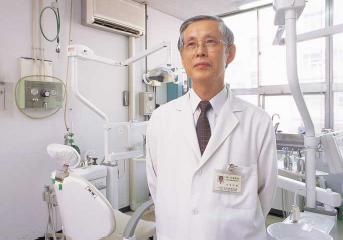
|
Shirazfs Dream Comes true:
Kyudai Surgeonsf Activities in Bangladesh
@Seven years-old Shiraz was often teased and laughed at because of his cleft lip, a condition from which he had
suffered since birth. The little boy would burst into tears and run to his mother when other children made fun of him.
His mother would comfort him by explaining, that although many people are born with a cleft lip, the condition is
treatable, and that after an operation his lip would be fine. Shiraz took faith in his motherfs words, and one day his
dream of having an operation came true. A team of Japanese surgeons traveled to Bangladesh and operated on
Shirazfs lip, repairing it to the normal shape. Shiraz had an operation on his palate when he was two years old, and
five years later he had the opportunity to have his lip treated by the same surgeon.
@The condition of cleft lip and/or palate is not as rare as is generally thought, and along with luxatio coxae congenita and congenital heart disease, is one of the three most common congenital abnormalities. The rate of occurrence differs between races; in Orientals it is around one in 500 to 700 births (0.20 to 0.14 %), compared to one in 700 to 1,000 births (0.14 to 0.10 %) in Caucasians. There is no statistical data for this anomaly in Bangladesh, but it is estimated that the number of untreated cleft patients is in excess of 300,000.
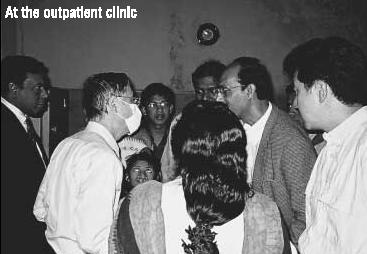
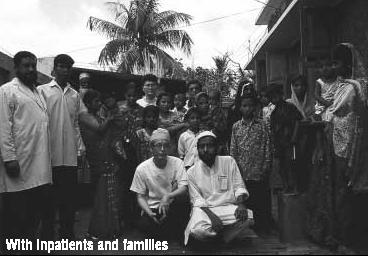
@Every year since 1997 I have been visiting Dhaka, Bangladesh, organizing a small team, and treating these kinds of patients with the support of a non- profit organization, the Japanese Cleft Palate Foundation. The team consists of oral surgeons, an anesthesiologist, and a nurse. We surgically treat the patients at the Department of Oral Surgery, Dhaka Dental College, where Dr. Mohiuddin Ahmed, who once studied at the Department of Oral Surgery, Hokkaido University (with a scholarship from the Japanese Ministry of Education, Culture, Sports, Science and Technology), is associate professor. The JICA Group Training Course in Clinical Dentistry started at our faculty in Kyushu University in 1988 and, I have been in charge of the group since its establishment. Every year a group of participants visits Hokkaido University, and it was during some of these trips to Hokkaido that I became acquainted with Dr. Ahmed who was acting as an interpreter for Hokkaido University. He spoke extensively about the situation of cleft patients in his country as soon as he knew that I had been engaged in the treatment of this disease. I told him about my joint cooperation program with Harapan Kita maternity hospital in Jakarta, Indonesia, in cleft lip and palate treatment, which had been progressing successfully since 1994. A few years later, I had the opportunity to propose sending a mission to Bangladesh at the councilorOs meeting of the above-mentioned NPO Foundation.
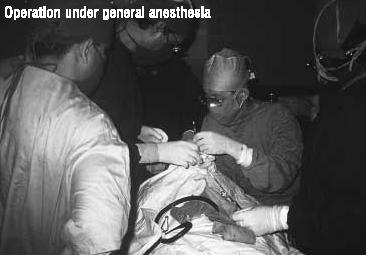

@Each trip to Bangladesh requires intensive planning. We have to prepare our biographies, newly issued certificates of graduation from medical or dental school, and the copies of licenses with English translations, and send them to Bangladesh. Everything is very slow there, and it takes 2 to 3 months to get authorization for our activities from the Bangladeshi government. We prepare everything we need for our work, including medicines such as analgesics, anesthetics and antibiotics. Antibiotics are necessary not only for patients but also sometimes for ourselves. We take all necessary surgical materials and instruments like suture threads, gauze, scalpels, needles and needle holders with us. They have limited operating facilities. There is no supply of sterilized water, and we scrub our hands with tap water using disinfectant. Even the tap water often stops running. Supplementary water is always kept in a big water pot. There are two operating tables, but only one anesthetic machine with no electric cardiograph. When one surgeon operates on a patient under general anesthetic, the other operates on another patient with local anesthetic. Both operating tables are equipped with astral lamps, but as there are frequent blackouts a portable generator was installed last year.
@Cleft patients are usually treated in early life. Due to the intense stigma associated with a cleft lip, families often request an operation as soon as possible after birth. However, surgeons and anesthesiologists are usually reluctant to operate so soon because the neonatal baby is too weak. We persuade the family to wait for 3 months. In the case of a cleft palate, the aim of the operation is to obtain intelligible speech. The optimal time for repair of the palate is at one and a half years of age. However, these theories are not accepted in Bangladesh. They lack knowledge and medical specialists for this disease. The first characteristic feature of the patients is that most of them who visit us are not babies, but school children and young adults.
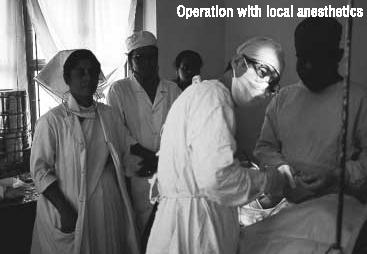

@In Bangladesh, a handful of people are rich and the rest are very poor. The very richest people go to the United State for treatment, the second richest strata go to Singapore, while the third most affluent group go to Bangkok. The rest stay in Bangladesh. The second characteristic feature is that the cleft is unbelievably severe, as the condition is often exacerbated by undernourishment and poverty. Year by year, the number of patients who come to see us is increasing. Last year, 250 patients came on the first day, and in total the number amounted to over 400. It is impossible for us to treat such a huge number of patients during such a short stay. Therefore, if we could train the doctors of Bangladesh, they could treat the patients by themselves and they may be able to satisfy the medical needs of the country. However, in Japan, as in other developed countries, cleft patients are treated on a team-work principle. I have successfully established this comprehensive system of treatment in Harapan Kita hospital in Indonesia. In our dental hospital at Kyushu University, the team consists of oral surgeons, speech therapists, pediatric dentists, orthodontists, preventive dentists and prosthodontists. In Harapan Kita maternity hospital, a plastic surgeon, a psychologist, a pediatrician, and an ENT doctor are involved in addition to oral surgeons, speech therapists and an orthodontist. Basically, the ultimate goal of this program in Bangladesh is to transfer all of our know-how of the treatment of this disease to the Bangladeshi people.
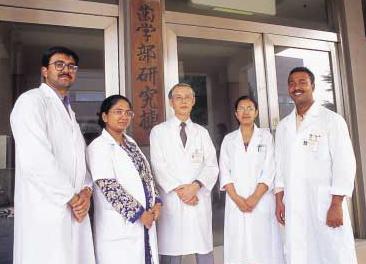
|
| With the postgraduate students from Bangladesh |